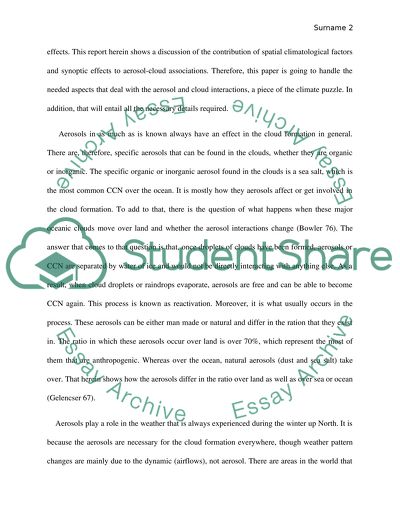Cite this document
(Aerosol-Cloud Interactions: A Piece of the Climate Puzzle Literature review, n.d.)
Aerosol-Cloud Interactions: A Piece of the Climate Puzzle Literature review. Retrieved from https://studentshare.org/environmental-studies/1639931-aerosol-cloud-interactionsa-piece-of-the-climate-puzzle
Aerosol-Cloud Interactions: A Piece of the Climate Puzzle Literature review. Retrieved from https://studentshare.org/environmental-studies/1639931-aerosol-cloud-interactionsa-piece-of-the-climate-puzzle
(Aerosol-Cloud Interactions: A Piece of the Climate Puzzle Literature Review)
Aerosol-Cloud Interactions: A Piece of the Climate Puzzle Literature Review. https://studentshare.org/environmental-studies/1639931-aerosol-cloud-interactionsa-piece-of-the-climate-puzzle.
Aerosol-Cloud Interactions: A Piece of the Climate Puzzle Literature Review. https://studentshare.org/environmental-studies/1639931-aerosol-cloud-interactionsa-piece-of-the-climate-puzzle.
“Aerosol-Cloud Interactions: A Piece of the Climate Puzzle Literature Review”, n.d. https://studentshare.org/environmental-studies/1639931-aerosol-cloud-interactionsa-piece-of-the-climate-puzzle.


